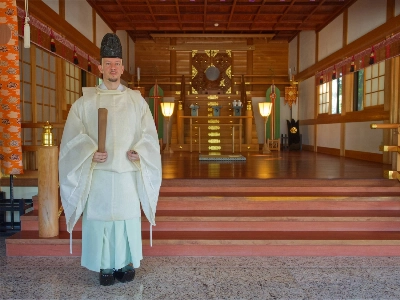* Japanese name: Monkagero
* Scientific name: Ephemera strigata
* Description: Mayflies are common, soft-bodied insects with short antennae and mouthparts that are vestigial (not used). They have two long cerci, tail-like structures growing from the end of the abdomen. They are easily recognizable because they hold their wings straight up above the body, and the abdomen is usually curved up away from whatever they are standing on. They have two pairs of wings, but the forewings are much bigger than the hindwings. Body length is 16-22 mm. Males' eyes are specially adapted for spotting females in flight, and adult males' forelegs have a special function too. They are quite long (they may be mistaken for antennae) and are used to grab hold of flying females to mate with them. The larvae have three tails, gills on the abdomen, and they burrow into the silt on the beds of slow-moving rivers.
* Where to find them: All over Japan, in most freshwater habitats. Adults can be seen from May to November, though their lifespans are much shorter. "Ephemera," the scientific name, is from the Greek word meaning "living a day." Most species of mayfly live for one to two days, but some live only a few hours. Others survive for more than a week. One species reportedly lives for only five minutes.
* Food: Nothing. Adults do not feed -- they are alive for such a short time and there are more important things to do, namely reproduce. The larvae, called nymphs, feed on plant debris and algae, occasionally eating animal material.
* Special features: Unique among insects, mayflies molt after reaching the winged stage of their life cycle. The pre-adult mayfly is dull in color due to a covering of fine hairs. If it manages to find a suitable perching place on a tree, it will rest, its skin will split and it will molt into the final adult stage. Now the clock is ticking, and there is but one thing for the mayfly to do -- mate. Males swarm (often above water), dancing up and down in large numbers. Any female approaching the swarm is seized by a male (using his long front legs and special claspers on his abdomen) and mated in the air. The eggs are quickly laid into the water, and the adults, their purpose fulfilled, flutter into the water. If swallows, bats or dragonflies do not pick them off, fish will gladly eat their spent, empty bodies.
4 hours ago



















With your current subscription plan you can comment on stories. However, before writing your first comment, please create a display name in the Profile section of your subscriber account page.